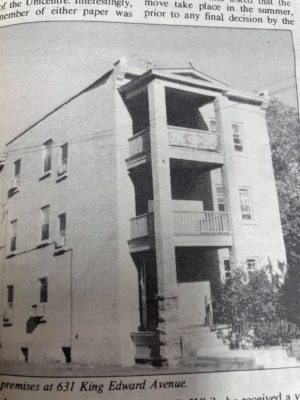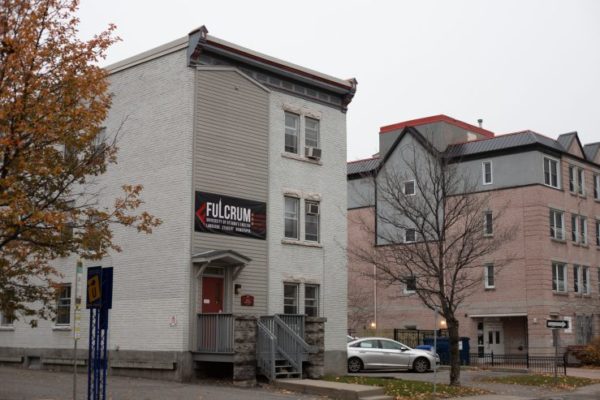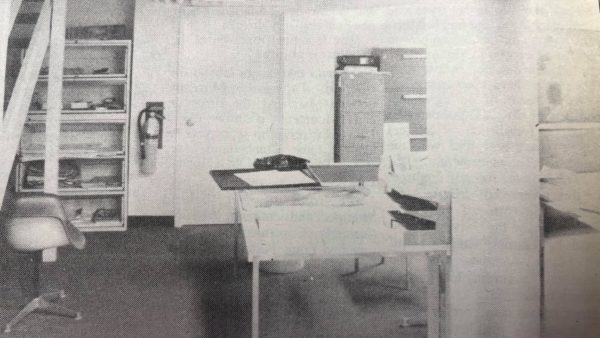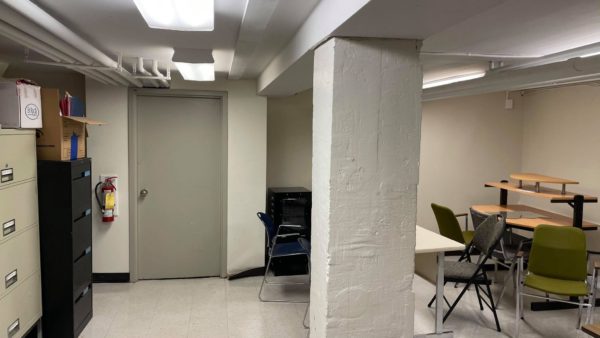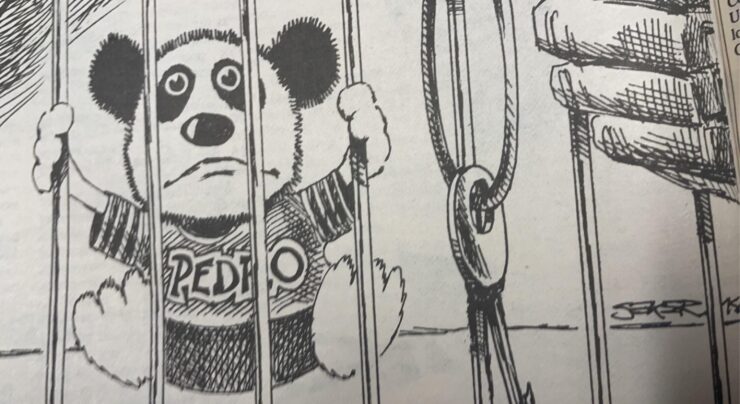Fulcrum gets new office at 631 King Edward Avenue
Originally published on Sept. 15, 1988.
Traditionally, September 1 is the year’s busiest day for movers; however, this year, one big move occurred a week early. Returning students (particularly those in Thompson residence) may have noticed the absence of both the Fulcrum and la Rotonde from their longtime nests in the unicentre’s media skywalk.
The move comes as a result of CFUO’s radio’s proposed expansion in anticipation of its FM license. As is the case with any move, the Fulcrum found that its relocation to 631 King Edward was fraught with problems and headaches. Incredibly, the first problem came when somebody forgot to tell the Fulcrum that a move to new offices was a reality.
“I first heard rumours of the move in March, but since we have been hearing these kinds of rumours since 1984, I didn’t place much faith in them,” said Fulcrum editor-in-chief, Siân Reid.
This time, however, the rumours proved to be prophetic, as on March 28, 1988, in a meeting of the University’s Administrative Committee, the decision was taken to move the two student newspapers out of the Unicentre. Interestingly, no member of either paper was present at the meeting and it was at this point that a definite breakdown in communications began. April and May are traditionally transition periods at the university, and both the Students’ Federation (SFUO) and newspaper change leadership.
When Christian Hyde took office as the new SFUO president in May, he spent the first three weeks learning the ropes of his position. One of the things he learned was that the papers were moving and it was up to him to coordinate it.
At the Fulcrum, Siân Reid was assuming the post of editor-in-chief, and beginning to suspect that there might be something more to the rumours than it had seemed at first. Reid had come across a memo that stated the Fulcrum would move. However, when she checked with Mme Lamarre, the media coordinator at the SFUO, Lamarre said she knew nothing of the move.
By late May, Hyde was organized and ready to begin business. High on his agenda was to begin coordinating a move that both papers still did not know was a fait accompli. On June 2, in a meeting with the two editors, Hyde not only told them of the move for the first time but also where they were going.
“Well my first reaction was: when, how and who’s going to pay?” said Reid. “A newspaper move is a logistical nightmare, involving more than a simple shifting of the furniture. Electrical and plumbing renovations are needed just to meet the basic needs.”
For Hyde, the June 2 meeting represented his first chance to meet the papers.
“I met with them as soon as I knew of the move and at all times tried to pass on information just as quickly as I learned it.”
Hyde did fight to make one change to the original decision. The March 28 meeting stated that the papers would move only when CFUO received its licence. As this might mean a move in the middle of the school year, causing even more problems Hyde went back to the administration and asked that the move take place in the summer, prior to any final decision by the Canadian Radio-television Telecommunications Commission (CRTC). While he received a verbal okay in mid to late June, the written confirmation did not come until July 14. With this, Hyde went back to the papers, and Reid settled on August 25 as a suitable moving date.
The ‘when’ of the move had been settled. As for the ‘how,’ Hyde arranged for the university services to complete the physical transfer of furniture and equipment. The next thorny problem came in the ‘who’s going to pay?’
The cost was to be split between the university administration and the papers. The administration would pay for the actual move, while the papers would pay for the renovations (approximately $3,000).
When asked about the apparent unfairness of making the papers pay for a move they would rather not make, Hyde agreed that it was a difficult decision, and one he knew would be unpopular. But, citing various factors (among them the separation of the Graduate Student’s Association from the SFUO) he found himself faced with a $44,000 shortfall over the previous year. Making the papers chip in was one way to ease the financial crunch. Hyde was quick to point out that “the papers are owned by the SFUO and should they be unable to meet their financial commitments, we would be ultimately responsible for them.”
As for the new location, how does 631 King Edward measure up to the old office in the Unicentre? For the Fulcrum’s editor, not very well.
“It’s smaller than the old office, our PMT machine is in the front hall since it’s too big to go anywhere else, we don’t know when we’re getting phones and the location is less accessible.”
So, is the saga of the shifting papers over? According to Hyde, the move is temporary. The papers will remain in their new house on King Edwards for two years, but after that, the University has a master plan which calls for the phasing out of those famous ‘grey houses’ and the building of a new University Centre.
Fun Facts about this article
- The temporary move to 631 King Edward for the Fulcrum turned out to be a permanent one. The Fulcrum has now been in its ‘grey house’ for over 33 years.
- As part of its 2015 Campus Master Plan to revitalize the King Edward Precinct the university plans to demolish our office. However, no concrete actions have been taken and the Fulcrum has not been informed of any plans to do so in the near future.
- At first, the Fulcrum only had access to the first floor and basement of the building. Over the years, the other tenants moved out and the Fulcrum now uses all three floors of the building.
- The Fulcrum’s old office was in the location where Déjà Vu now sits between Thompson Residence and Morisset Hall.
- Siân Reid is a lecturer in the department of sociology at Carleton and specializes in Heathenry and paganism. She is the lead researcher for Canadian Pagan Survey Project.
- $3,000 in 1988 with inflation is now the equivalent to $5,823.
- Christan Hyde speaks seven languages and founded Hyde & Associates, a law firm that specializes in telecommunications law worldwide.
- Nowadays, the Fulcrum basement is used once a year for the editor-in-chief election.


